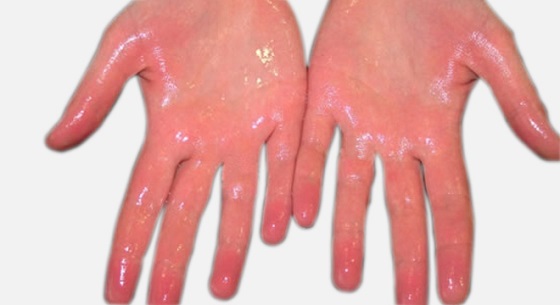Targeted Dermatology Treatments for Hyperhydrosis of Hands and Feet: Efficient Solutions
Introducing the Intricacies of Excessive Sweating: A Comprehensive Overview to Diagnosis and Monitoring
Too much sweating, clinically recognized as hyperhidrosis, is a problem that influences a substantial number of people and can have an extensive effect on their high quality of life. While sweating is a natural bodily function, its overactivity in hyperhidrosis offers an one-of-a-kind collection of difficulties that commonly go beyond mere discomfort.

Recognizing Hyperhidrosis Causes
Hyperhidrosis triggers can be connected to various aspects such as genes, hormonal discrepancies, and particular medical conditions. Genes play a significant function in main focal hyperhidrosis, where people inherit the condition from their family members. By recognizing the specific elements adding to too much sweating, medical care companies can customize therapy plans to deal with the underlying cause, using alleviation and improving the quality of life for individuals impacted by hyperhidrosis.
Identifying Hyperhidrosis Effects

Furthermore, hyperhidrosis symptoms might materialize in social and emotional distress, as people might feel embarrassed or distressed regarding their sweating, resulting in evasion of social circumstances (Treatment for hyperhydrosis of hands and feet). In addition, repeated episodes of too much sweating can result in skin maceration, fungal infections, and a total reduction in self-esteem
Diagnostic Refine for Hyperhidrosis
Initiating the analysis process for too much sweating includes comprehensive analysis of the individual's case history and physical exam. Asking about the start, duration, and causes of sweating episodes is vital to differentiate in between main focal hyperhidrosis and second generalized hyperhidrosis. Clinical history must also consist of inquiries regarding drugs, medical conditions, and household background of hyperhidrosis.
Throughout the physical exam, specific interest is paid to the locations influenced by sweating. The health care supplier might examine the level of sweating, look for signs of underlying problems, and review the impact of sweating on the person's top quality of life. Furthermore, certain examinations like the gravimetric test, starch-iodine test, or skin conductance measurements might be conducted to quantify the quantity of sweat created.
Moreover, in cases where secondary hyperhidrosis is suspected, added tests such as blood examinations, pee examinations, and imaging researches may be recommended to recognize the underlying sites reason for too much sweating. The analysis process aims to accurately determine the kind and reason of hyperhidrosis to assist ideal administration techniques.
Therapy Options for Hyperhidrosis
When dealing with too much sweating, different treatment advice options are available to reduce signs and improve the person's top quality of life. The treatment strategy for hyperhidrosis depends upon the intensity of signs and symptoms and the client's action to preliminary treatments.
Topical therapies, such as aluminum-based antiperspirants, are commonly suggested as the very first line of defense for handling moderate cases of hyperhidrosis. For individuals with much more severe symptoms, dental drugs like anticholinergics may be recommended to aid lower sweating.

Effective Administration Strategies
To properly handle hyperhidrosis, a detailed and individualized therapy plan customized to the person's specific demands and response to previous therapies is vital. Iontophoresis, involving the usage of a reduced electric existing to decrease sweat gland activity, can be helpful for both palmoplantar and axillary hyperhidrosis. A multidisciplinary approach entailing dermatologists, key treatment physicians, and, if essential, specialists, can maximize the monitoring of hyperhidrosis.
Final Thought
In conclusion, hyperhidrosis is a problem identified by excessive sweating, which can substantially influence an individual's top quality of life. With proper medical diagnosis and management techniques, people experiencing from hyperhidrosis can discover relief and improve their general health.
Too much sweating, clinically recognized as hyperhidrosis, is a condition that influences a substantial number of people and can have a profound impact on their top quality of life. By recognizing the particular variables contributing to too much sweating, health care suppliers can tailor therapy strategies to attend to the underlying reason, using alleviation and boosting the quality of life for people affected by hyperhidrosis.
Hyperhidrosis, characterized by excessive sweating past what is essential for controling body temperature, can dramatically affect an individual's top quality of life. Asking concerning the beginning, duration, and activates of sweating episodes is critical to differentiate in between main focal hyperhidrosis and second generalized hyperhidrosis. Treatment for hyperhydrosis of hands and feet.In conclusion, hyperhidrosis is a problem characterized by too much sweating, which can significantly affect an individual's high quality of life